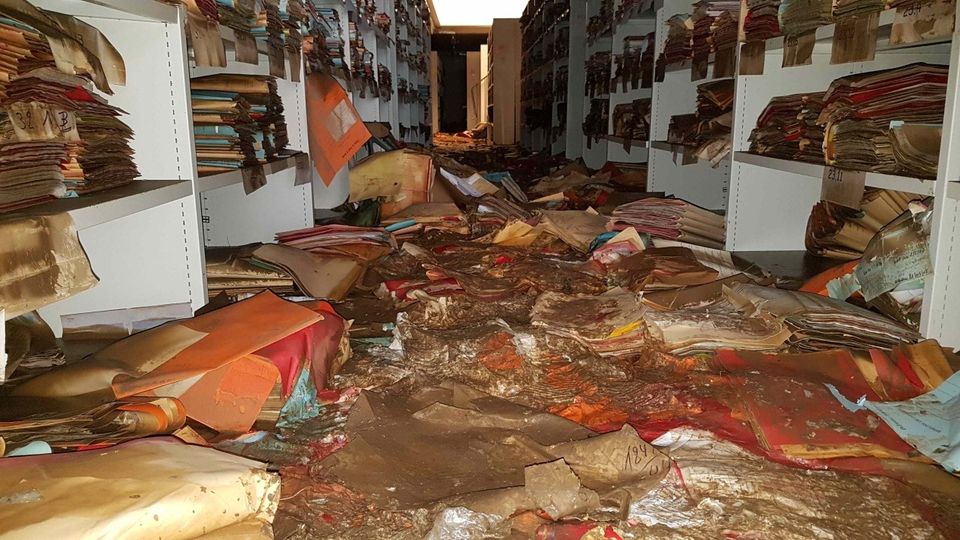After the human cost of the recent flooding has been reckoned – 41 dead and all but one missing person now accounted for – attention turns to material costs.
The cost of property and belongings damaged will take months and an entire insurance industry to figure out, but in the meantime, the rush is on to take care of the damage caused to precious documents.
“Water is one of the worst enemies of archives,” the state archive posted on Facebook. “Fortunately, our depots were completely spared, but the flood of the past days and weeks affected many archives kept elsewhere, on which the State Archives exercises a supervisory function.”
That includes the archive maintained by the Walloon region – where most of the damage was suffered – in the regional capital Namur. The city sits at the confluence of two rivers, the Sambre and the larger Meuse, which makes the location particularly picturesque, but also, on this occasion, more dangerous.
That’s where the region’s archaeological treasures are stored, and where the flooding hits not once but twice, on 16 July and 24 July.
The archaeological finds are stored in wooden crates, in an underground storage centre of 1,600 square metres – imagine the warehouse containing Charles Foster Kane’s hoard. Everything is done to control the surroundings to the best of man’s ability, but when the waters come, nothing will stand in their way.
The crates are minutely inventoried, and include the bones of a mammoth, weapons from the Stone Age, a wooden cartwheel and more. Most is now suffering water and mud damage. Some have survived millennia, and can be recovered. Others only survived because by some happy coincidence they escaped water and mud damage until now.
"Our people were there when the water started to rise. They immediately tried to save the most precious objects. But the storm made it too dangerous and they had to stop," Florence Noirehomme, scientific director of Awap, the Walloon heritage agency, told the VRT.
"The organic materials (wood, leather and especially metal) are the absolute priority to bring out," she said. “These objects, in particular, should be dried as soon as possible, otherwise they risk falling apart. Metal can rust very quickly due to the moisture. In the basement, many shelves are still flooded with ceramics, but that material is more resistant to water.”
Meanwhile, at a national level, the State Archive has spread out its message.
“The State Archives contacted, among others, municipalities, the federation of notaries, the services of the governors, the provincial solidarity cells and those responsible for the infrastructure of the Finance and Justice ministries, which produce and store the largest amounts of archives. Where possible, help was and is provided to prepare damage reports, select damaged archives for destruction or restoration, provide advice on fungal control, etc.”
The archives are now looking for help from companies that have free space in freezer rooms below below -20ºC, in the hope of saving documents from the damage caused by fungus. If the documents can be fast-frozen in time, the fungus can be killed off and the documents thawed at a later date.
Any ideas? Contact archives.liege@arch.be.

